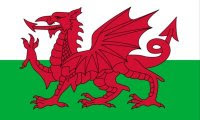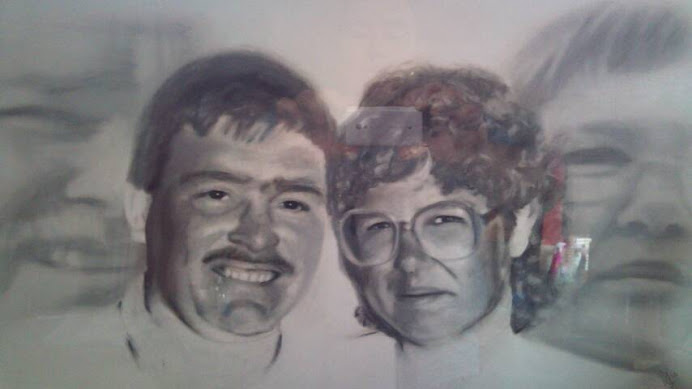SCALING AND TRANSFERRING OUR REFERENCE PHOTOGRAPH
We begin by scaling the reference image with a marked out pencil grid on the canvas board. Our image is then transferred across using pencil. The good news with the 'grid' method is that we can rescale the reference photograph larger or smaller on our painting surface (support). When we're happy with the drawing, it's time to erase some of the construction lines. Well, at least to try to erase these lines as far as is possible. They good news is, we're going to use acrylic, and acrylic paint tends to cover well. So eventually the lines that are left should be obscured.
It's important to draw grid lines lightly and only in the specific areas where they are needed. Do not draw grid lines all the way across your support! The squares created by the grid lines can be further divided if you need more detail or accuracy in that particular area. It's also important to draw lightly when constructing the image over the grid lines. If you're using watercolours then you can use watercolour pencils to construct grid lines and to draw the image and most of these will gently wash away during the painting process. Alas, today we're using acrylic and canvas board. The canvas board likes to hang onto the pencil. I have deliberately pressed hard with both the grid construction and the drawing phase, because I want the method to clearly show up in the 'how to' photographs. But I may end up paying for this later in the day.
STARTING WITH THE SKY
Cadiz is in Spain; so we are talking warm vibrant colours. The first task is to lay down the sky colour. On this occasion I have gone for Lefranc 'Louvre' Deep Blue. The photograph shows a second layer of blue being applied from the top of the board. I took the photograph having painted half way down, just to show you the difference between one and two coats of paint. It's my intention to move swiftly back to the painting and take the second coat of Deep Blue all the way down to the buildings.
Take care around the edges of the buildings where they meet the skyline, so that you don't create obvious brush strokes, going up and down that replicate the building shapes. I'm using a Daler Rowney 'System 3' No.12 Filbert brush. If you handle this brush carefully and are not afraid of turning it, then you can get in quite close while trying to keep the brush strokes left to right, or at the very least finishing them left to right while the acrylic paint is still wet. It's a bit like watercolour; in that you need to work quickly.
IMPROVING THE SKY COLOUR
I wasn't overly convinced with the result from the two layers of LeFranc 'Louvre' Deep Blue, so Winsor & Newton 'Galeria' Ultramarine was mixed with Deep Blue paint and layered as a third coat of acrylic across the sky. To try to give the sky an extra punch, while that third layer was still wet; I introduced neat Ultramarine low down in the skyline to the right of the buildings. The Deep Blue and Ultramarine mix was also introduced into the painting to form the sea. Two coats of paint were applied to the sea. The first coat deliberately left the white lines that will form the light reflections later in the painting process. When dry, a second 'wash' coat of the mixture was applied all the way across working left to right and going over the vertical white stripes.
BLOCKING IN THE LAND
Having blocked in the sky and sea, it's not time to turn our attention to the land sweeping from the right hand side of the canvas board, across the middle and running down to our foreground. I went for Daler Rowner 'Cryla' Yellow Ochre as my base blocking in colour.
In all stages so far with this painting, I've just using water and have not used my favourite 'System 3' Flow Enhancer manufactured by Daler Rowney. Flow Enhancer will show less brush strokes and retain more pigment colour in the image. But the product comes in at circa £6.50 for a 75ml jar, so it's not something to waste. When you do use Flow Enhancer, I recommend that you decant a very small amount to a smaller jar. I use cleaned out small jam jars (the kind that you get in a coffee shop with your toast). You can use a pipette (if you can get your hands on one) to transfer the Flow Enhancer or even use a medicine syringe. Although with the latter, I recommend that you keep the syringe securely locked away out of the reach of a small child and labelled to remind yourself and other adults that you have used this particular one to transfer paint substances and not to use for medicine!
CHOOSING SOME BUILDING COLOURS
There are some lovely Mediterranean colours in the buildings shown in the Reference Photograph (and I've visited Cadiz at least twice), so I've opted to using and mixing the following paints (in no particular order): Rowney 'Cryla' 501 Cadmium Red, 308 Bright Green, 612 Cadmium Yellow, 221 Burnt Sienna, 651 Lemon Yellow, 513 Crimson, 123 Utramarine, 527 Light Red Oxide, 352 Hooker's Green. I mention visiting Cadiz not as a boast, but as an important aspect of painting. I think that it's quite pompous when people refer to 'En plein air' or 'Plein air' painting. What they actually mean is; painting outdoors at the scene. There are some good points and some drawbacks with this outdoor malarky. People are bound to approach you, take an interest in your work, and in the main; praise you. Unfortunately this interaction opens up a sort of social contract with the viewer; you don't want to let them down. So there I was in the centre of Cardiff while everyone else was enjoying the NATO Summit shenanigans, nicely positioned in the middle of a closed road with only the Police horses to worry me, and what did I go and do? Well, I'll tell you what I went and done, I simply drew a superb drawing of Cardiff Castle. Which attracted lot's of praise and would have course have been the perfect outcome if I had intended to do a pencil drawing of Cardiff Castle. The thing is, that was not my intention and I was instead armed with superb (gifted) handmade watercolour paper and watercolours. So here I am with my lovely pencil creation, created to prove to my Social Contractors that I could draw, and I then promptly painted as if I was colouring by numbers. It was a dreadful outcome, and I was so cold, that I promptly debunked to my favourite coffee shop in Cardiff and sat at the back to whittle up a lovely Summer beach scene in watercolour from memory.
So lesson number 1; don't draw it (you can do a swift sketch, but get on and paint it). On my second outing in Aberystwyth, I settled for painting a nice sky to frame my subject and then got on with the nitty gritty. My social contract part was to immediately show that I could paint, while thereafter enduring the turmoil of working the image to completion. The thing is; both of these experiences left me with something far beyond what happened on each day. These attempts were in many ways intense events. As a result of that intensity; I can sort of feel the shape of the castle walls, and see the darkness in the corners. Whereas with the Aberystwyth image I can hear the sea, and see the waves crashing, and see the many colours of those who settled and walked on by. And this folks is what painting outdoors truly means. Lesson number 2; you see the true colours that a camera will only settle for as an average, you also feel the wind, and or the beating of the sun, and many other things that allows us to 'connect' with the scene. That connection can be transferred back to our studio. Not just for the painting process in itself, but also because the memories add to the joy of the painting. And if we're not enjoying it, then we sort of have to ask ourselves why on earth are we doing it.
For this photograph I have also added another layer of Ultramarine to the sea and close to the tops of the buildings and also swept brush strokes of Ultramarine randomly across the sky. The buildings have had two layers of paint. The secnd layer applied after the first one had dried.
Another enjoyable hour passed with the 'Cadiz' painting. This time it was a case of paying attention to the sea wall and the rocks that make up the sea defences. The main colours used for the rocks was 'Cryla' Prussian Blue mixed with Cryla Cadmium Red and then lightened to various tones with Winsor & Newton Mixing White. Most of the darkened marks were achieved with undiluted 'Cryla' Burnt Umber, and to add some interest 'Lefranc' Burnt Sienna and 'Galeria' Raw Sienna were added in part, including some dry brushing of the Raw Sienna over the lighter tones. The sea wall base colour from earlier photographs was overpainted almost to its top edge with a mixtuure of 'Cryla' Light Red Oxide and Cadmium Red, followed by some dotting of the lightish purple colour that was used for part of the sea wall.
To finish off the painting; 'Cryla' Titanium White was applied to the sea for a reflection and then each colour was immediately applied, before going on to paint the next reflection. The orange was a mixture of 'Cryla' Cadmium Red and Cadmium Yellow. The green is 'Cryla' Bright Green. The blue reflection is a mixture of 'LeFranc' Deep Blue and the Titanium White used for the base of each reflection. It was a case of moving quickly, constantly cleaning the brush, and having plenty of water spread over three jars (one for waste, one for use, one with clean water to top up the 'use' jar). Some over painting with the same colour mixtures was added at the end using a fine brush. The street lights were dabbed in 'Cryla' Titanium White and then Cadmium Yellow.
So there we are, a nocturnal Cadiz scene. The only thing left to do is to paint the image with acrylic gloss varnish. I've signed the image on the rocks so that the letters and date are less obvious.
Happy painting everyone!












